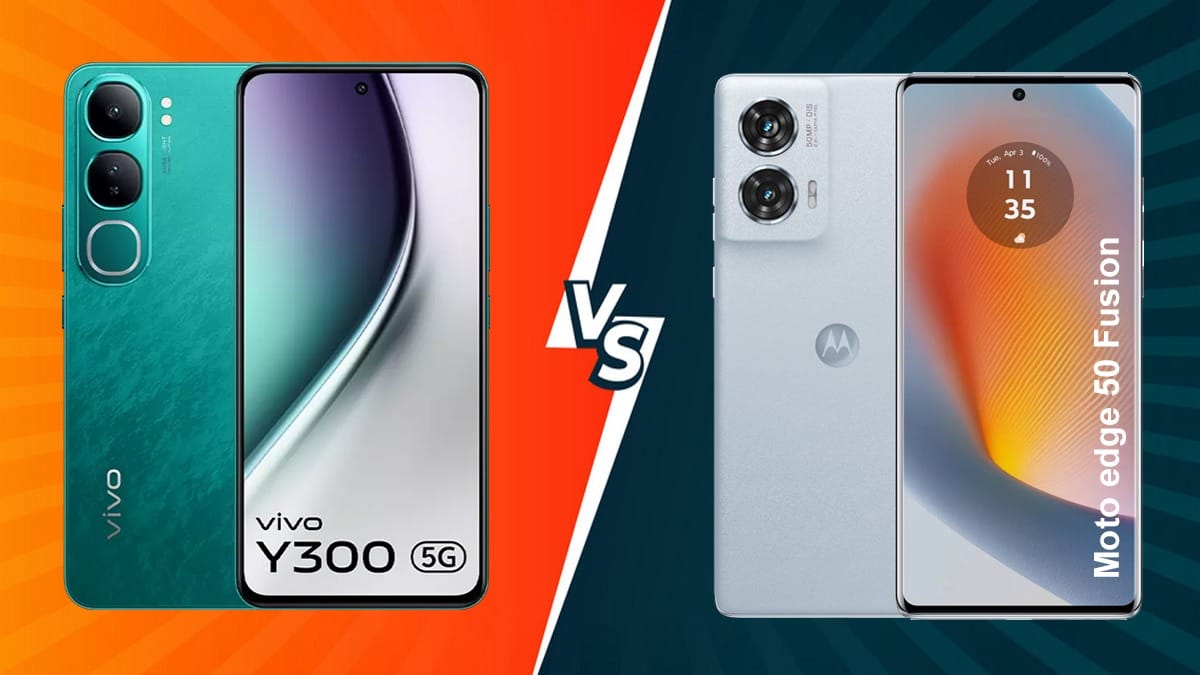Which is Better: Moto vs Vivo?
Confused between Motorola and Vivo? Compare their software, performance, design, and camera features to find out which brand fits your style—clean Android or camera-focused aesthetics.

Motorola and Vivo have established solid reputations in the mid-range and premium smartphone markets, although they target different user demographics. Motorola emphasizes clean software and dependable performance, whereas Vivo excels in design and camera advancements. As both brands provide competitive features within similar price ranges, consumers frequently struggle to make a choice between them. In this blog, we examine the main distinctions in design, performance, software, and other areas—facilitating your decision on which brand aligns more closely with your requirements, be it straightforward stock Android or a smartphone that emphasizes style and photography.
2. Brand Philosophy & Market Position
Motorola has established a niche for itself among users who favor a clean, nearly stock Android experience. Due to the minimal bloatware often included on its phones, they are smooth, responsive, and user-friendly. With an emphasis on sturdy construction, longevity of battery charge, and dependable daily performance, the brand is well-suited for practical users and professionals who prioritize efficiency above showiness.
On the other hand, Vivo is more appealing to those who prioritize design, camera quality, and display richness. Vivo phones, featuring striking designs and bright AMOLED displays, appeal to users who prioritize aesthetics, including selfie enthusiasts and content creators. It’s a brand that combines style and performance, especially in photography and media consumption.
In short, Motorola is built for the minimalist power user, while Vivo is crafted for those who want their phone to look and feel premium — both inside and out.
3. Top 3 Phones from Each Brand in 2025
1. Moto Edge 50 Pro: A premium mid-range device with a pOLED 144Hz display, Snapdragon 7 Gen 3, and 125W fast charging. Ideal for users who want near-flagship performance with clean software under ₹32,000.
Read full review: Moto Edge 50 Pro Review
2. Moto G73 5G: Powered by Dimensity 930, it offers smooth performance, 120Hz LCD display, and 5G support at a budget-friendly ₹18,999. Perfect for students and light users.
Read full review: Moto G73 5G Review
3. Moto Edge 40 Neo: Lightweight, stylish, and equipped with a 144Hz pOLED display and IP68 rating. With its MediaTek 7030 chip, it balances style and substance under ₹23,000.
Read full review: Moto Edge 40 Neo Review
Vivo
1. Vivo V30 Pro: Focused on camera lovers, it features ZEISS-tuned lenses, Dimensity 8200, and a curved AMOLED display. Ideal for content creators and selfie enthusiasts around ₹41,999.
Read full review: Vivo V30 Pro Review
2. Vivo T3 5G: Offers the Dimensity 7200 chipset, 120Hz AMOLED, and a 5000mAh battery under ₹20,000. A solid pick for gamers and everyday users who value display and speed.
Read full review: Vivo T3 5G Review
3. Vivo Y200e: Stylish design with a vegan leather finish, Snapdragon 4 Gen 2, and 120Hz AMOLED. Great for casual users seeking aesthetics and battery backup on a budget.
Read full review: Vivo Y200e Review
5. Which Brand is Better for Whom?
Choose Motorola if you:
- Prefer a clean, near-stock Android experience with no bloatware.
- Want smoother and more stable day-to-day performance.
- Value good battery life and consistent performance over flashy features.
- Are a student, working professional, or someone who likes minimal UI.
- Are looking for good performance under ₹20,000.
- Choose Vivo if you:Care about camera performance, especially for selfies and portraits.Prefer stylish phones with sleek designs and curved AMOLED displays.Enjoy vibrant screens and a UI packed with features and customization.Create content for social media or consume a lot of video content.Want more premium design and camera hardware in the ₹20K–₹30K segment.
- For long-term usage:Motorola is better for those who want fast, stable software updates and a clutter-free interface.Vivo is better for users who enjoy feature-rich skins and are okay with some extra apps.
- In short:
- Motorola is for performance-first users who like simplicity.
- Vivo is for those who want camera strength, display quality, and style.
Conclusion
While both Motorola and Vivo have established their strengths in the smartphone market, they cater to different user priorities. For a smooth experience without complications, featuring clean software, a durable battery, and reliable performance, Motorola is the superior choice. However, if you seek lively screens, chic aesthetics, and superior camera results—particularly for selfies and portraits—Vivo is superior.
In the end, your ideal choice comes down to what you value more: performance and software simplicity (Motorola), or visual appeal and camera capability (Vivo). Choose based on your usage style, and you’re unlikely to go wrong with either.




